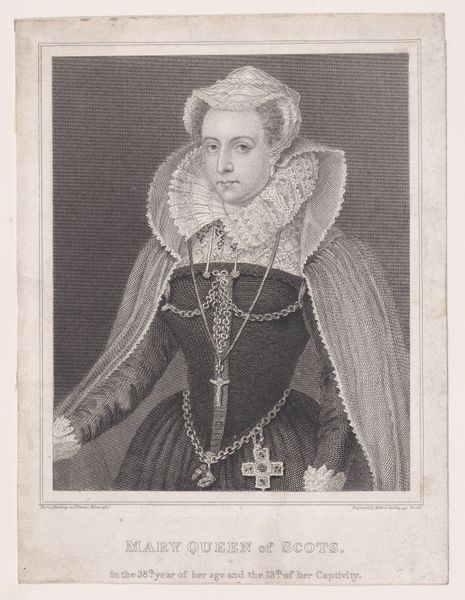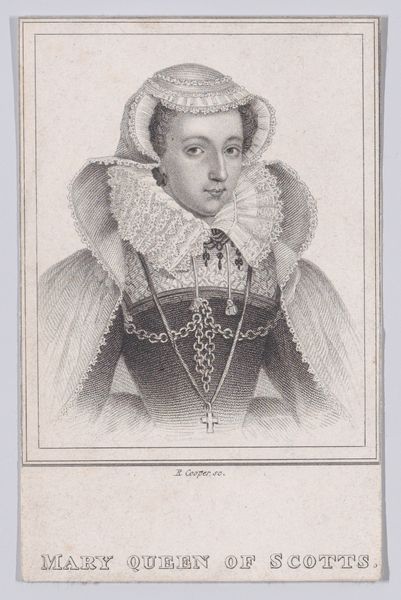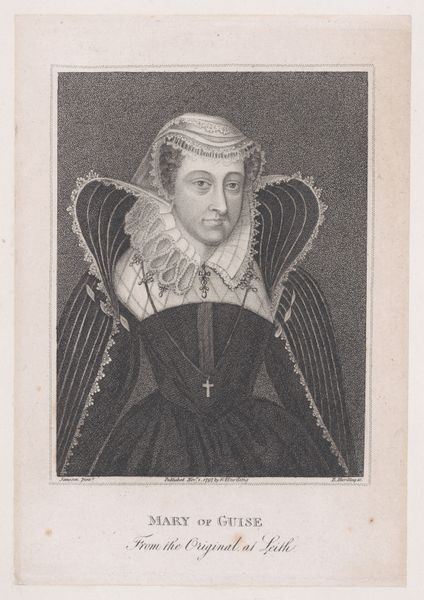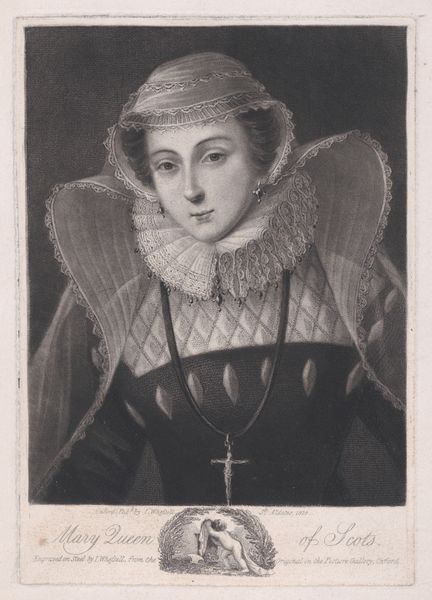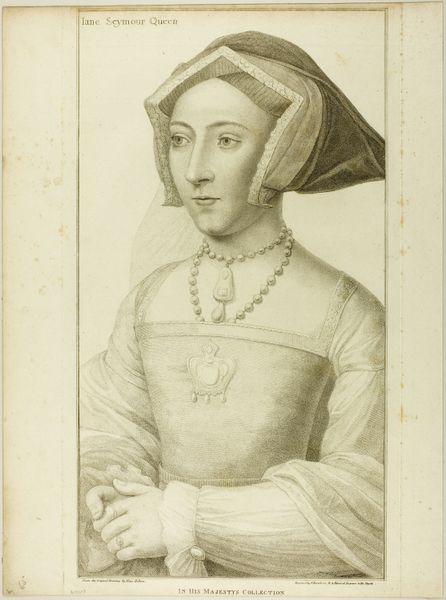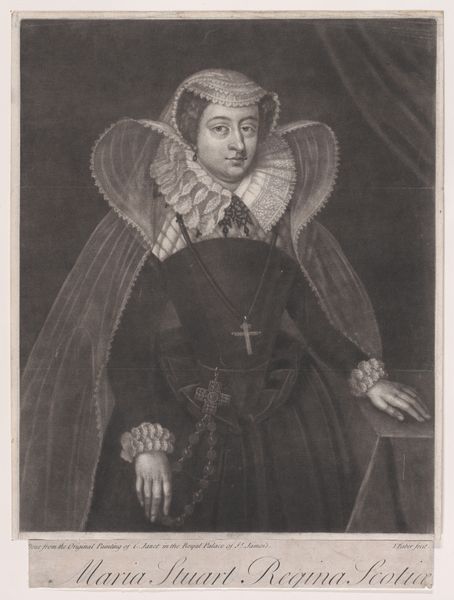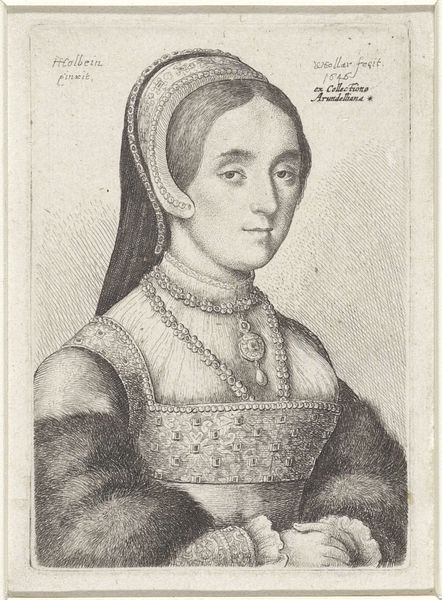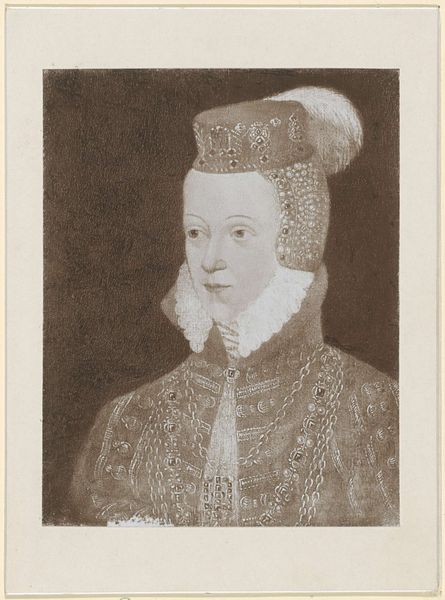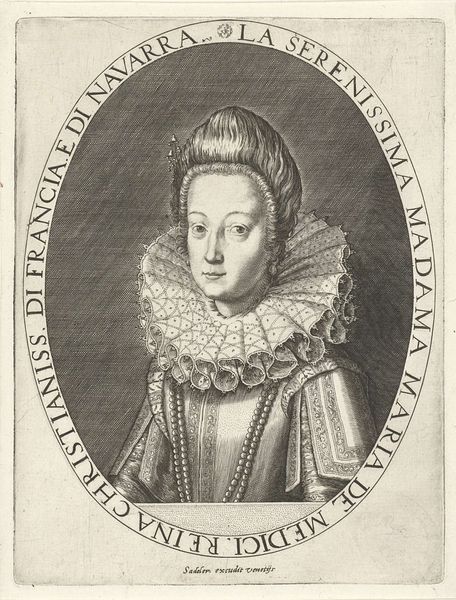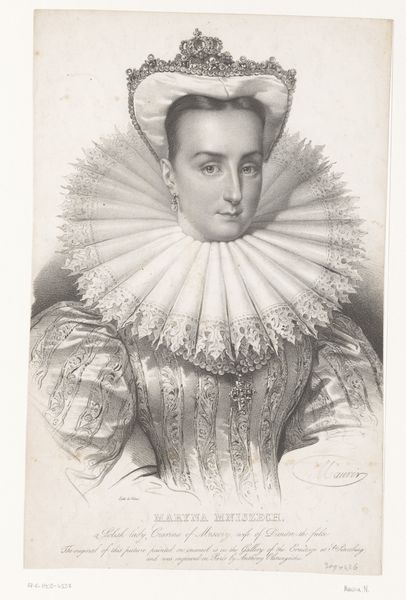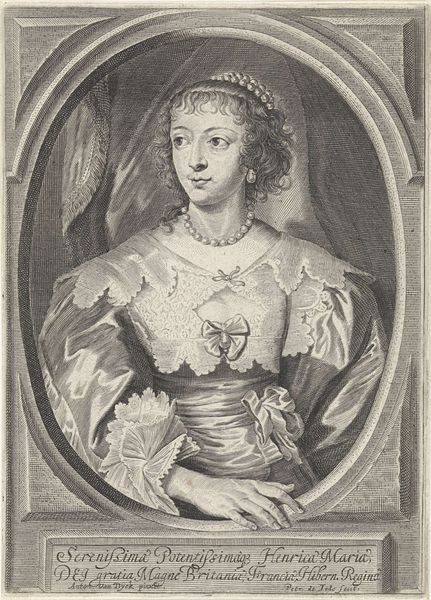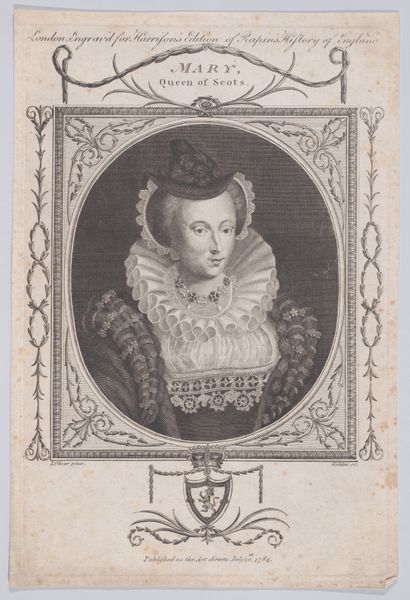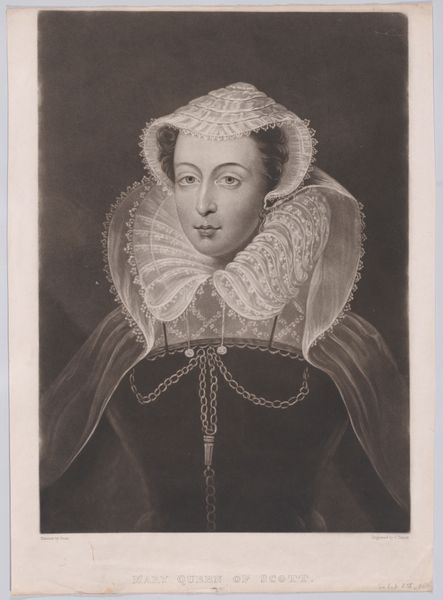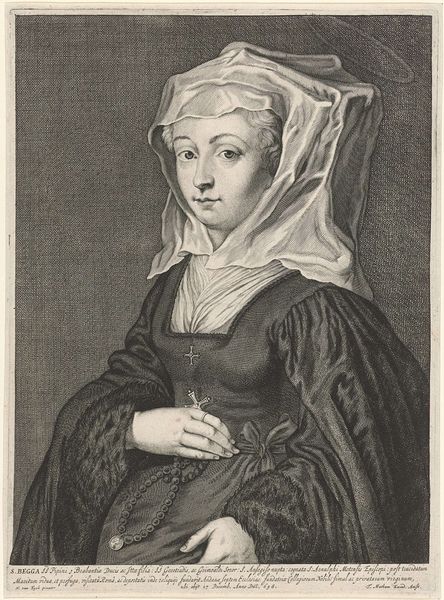
drawing, print, engraving
#
portrait
#
pencil drawn
#
drawing
#
neoclacissism
# print
#
history-painting
#
engraving
Dimensions: Sheet: 6 1/2 × 4 3/16 in. (16.5 × 10.6 cm)
Copyright: Public Domain
Editor: Here we have John Kay’s “Mary, Queen of Scots” from 1791, rendered as an engraving. The detail is incredible; her lace collar and the texture of her dress feel almost tactile. How does one begin to unpack such an image? Curator: Indeed. Note the almost mathematical precision in the hatching and cross-hatching that define the chiaroscuro. The ovoid frame, enclosing the figure, creates a visual compression, directing our gaze towards the central axis of her body. Do you observe any disruptions to this compositional stability? Editor: Now that you mention it, the lighting feels slightly uneven. Her face is illuminated, drawing the eye, but the deep shadows on her right side contrast sharply. Curator: Precisely. This unevenness in lighting introduces a certain dynamic tension. Furthermore, the details of the jewelry – the crucifix, the large cross pendant – hang heavy in the image, adding a pronounced vertical vector that both reinforces and challenges the contained space. The image seems to operate via the calculated juxtaposition of elements rather than symbolic messaging, don’t you think? Editor: That’s an interesting way to frame it. I was inclined to see them as symbols of her faith and position. Curator: And the choice of the engraver to utilize hatching at certain areas of her garments but none at others is important as well, for its varied uses draw different implications when viewed as one coherent representation of fabric, for example. Editor: I appreciate how this perspective focuses my attention on the artistic intent. I initially overlooked how meticulously the artist manipulated light and form. Curator: It allows us to consider the work outside historical interpretation.
Comments
No comments
Be the first to comment and join the conversation on the ultimate creative platform.
